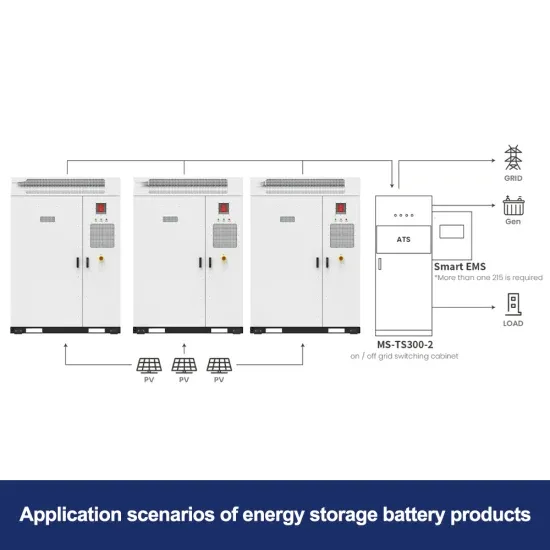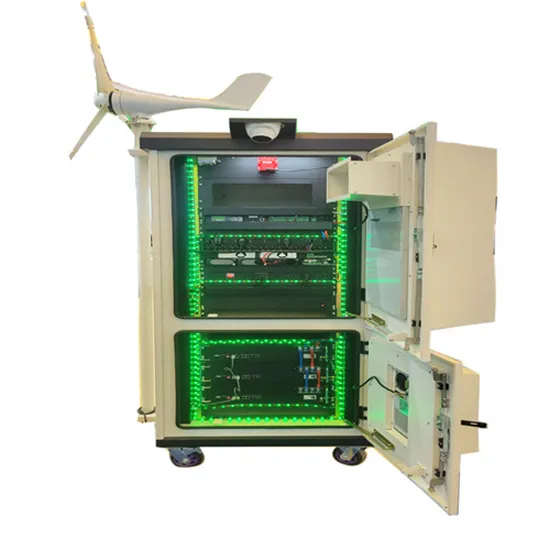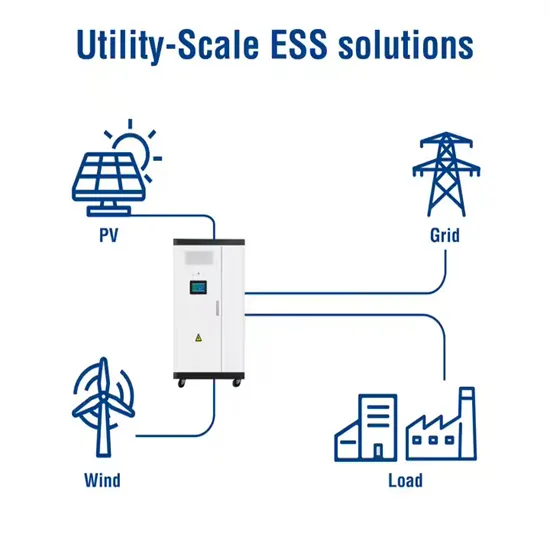
The world''s first realization of wireless base stations with lower
By switching such wireless base stations from the active state to sleep state, the power consumption of some wireless base stations can be reduced, contributing to lower
Get Price
Mobile communication base station alkaline battery small current
For some remote base stations that are difficult to repair due to inconvenient traffic, the power consumption is also small, generally only 10~20A, and the alkaline battery
Get Price
Optimal location of base stations for cellular mobile network
The location of these events might not cover the large demand. In this paper, we address the classical problem of locating base stations for a mobile cellular network to serve
Get Price
Modeling and aggregated control of large-scale 5G base stations
A significant number of 5G base stations (gNBs) and their backup energy storage systems (BESSs) are redundantly configured, possessing surplus capacity during non-peak
Get Price
Power consumption analysis of access network in 5G mobile communication
The network power efficiency with the consideration of propagation environment and network constraints is investigated to identify the energy-efficient architecture for the 5G
Get Price
Mobile phone base stations: radio waves and health
Summary Base stations transmit and receive radio waves to connect the users of mobile phones and other devices to mobile communications networks. The strength of the
Get Price
The Evolution of Base Station Antennas for Mobile Communications
This paper gives a general overview of the design of base station antennas for mobile communications. It explains underlying theoretical and practical implementation aspects in
Get Price
INVESTIGATORY ANALYSIS OF ENERGY REQUIREMENT OF A MULTI-TENANT MOBILE
This study examines the energy requirements of a multi-tenant BTS, focusing on power consumption patterns, key energy-intensive components, and optimization strategies.
Get Price
Measurements and Modelling of Base Station Power
Base stations represent the main contributor to the energy consumption of a mobile cellular network. Since traffic load in mobile networks significantly varies during a working or weekend
Get Price
INVESTIGATORY ANALYSIS OF ENERGY
This study examines the energy requirements of a multi-tenant BTS, focusing on power consumption patterns, key energy-intensive
Get Price
Resilient and sustainable microgeneration power supply for 5G mobile
A mechanism is proposed to exploit microgeneration and mobile networks to improve the resilience by managing the renewable energy supplies, energy storage systems,
Get Price
Machine Learning and Analytical Power Consumption
When symbol shutdown is activated, the AAU switches off the MCPAs, and its power consumption is reduced to the sum of the baseline power consumption, P0, the baseband
Get Price
Powering Mobile Base Stations
The primary sources of power for these mobile base-station vary by region and can generally be categorized into 3 buckets: Reliable grid power: AC mains or grid power can reliably serve as
Get Price
The Cellular Concept— System Design Fundamentals
In mobile assisted handoff (MAHO), every mobile station measures the received power from surrounding base stations and continually reports the results of these measurements to the
Get Price
The business model of 5G base station energy storage
1 Introduction 5G communication base stations have high requirements on the reliability of power supply of the distribution network. During planning and construction, 5G base stations are
Get Price
Measurements and Modelling of Base Station Power Consumption under Real
Base stations represent the main contributor to the energy consumption of a mobile cellular network. Since traffic load in mobile networks significantly varies during a working or weekend
Get Price
Power Management of Base Transceiver Stations for Mobile
The BTS management strategies that optimize the BTS power consumption (minimum absorbed Watt), the BTS performance (minimum response_time to incoming calls), and the BTS
Get Price
(PDF) Dispatching strategy of base station backup power supply
Overall, this study provides a clear approach to assess the environmental impact of the 5G base station and will promote the green development of mobile communication facilities.
Get Price
Power consumption modeling of different base station types in
In this paper we developed such power models for macro and micro base stations relying on data sheets of several GSM and UMTS base stations with focus on component
Get Price
Power consumption analysis of access network in 5G mobile
The network power efficiency with the consideration of propagation environment and network constraints is investigated to identify the energy-efficient architecture for the 5G
Get Price
Power Consumption Modeling of Different Base Station
In this work the electrical input power of macro and micro base stations in cellular mobile radio networks is characterized and quanti ed in dependence of the load level. The model
Get Price
Powering Mobile Base Stations
The primary sources of power for these mobile base-station vary by region and can generally be categorized into 3 buckets: Reliable grid power: AC mains or
Get Price
Base Stations
The idea of base stations is anchored in their function to provide coverage, capacity, and connectivity, hence allowing for extending the working
Get Price
base station in 5g
A 5G base station is a complex system that integrates advanced RF technology, digital signal processing, and network architecture to deliver
Get Price
10
In this chapter, we consider the problem of power management for BSs with a renewable power source in a smart grid environment. In Section 10.2, we first provide an
Get Price
Base Stations
The idea of base stations is anchored in their function to provide coverage, capacity, and connectivity, hence allowing for extending the working capabilities of mobile
Get Price
The world''s first realization of wireless base stations
By switching such wireless base stations from the active state to sleep state, the power consumption of some wireless base stations can be
Get Price
Communication Base Station Backup Battery
High-capacity energy storage solutions, specifically designed for communication base stations and weather stations, with strong weather resistance to ensure continuous operation of
Get Price
Power consumption modeling of different base station types in
In wireless communications micro cells are potentially more energy efficient than conventional macro cells due to the high path loss exponent. Also, heterogeneous
Get Price
Wireless & Mobile Communications Questions &
Explanation: The size of the cells in cellular network is kept small because of the need of high capacity in areas with high user density and reduced size and
Get Price
6 FAQs about [Power capacity of mobile communication base stations]
How do base stations affect mobile cellular network power consumption?
Base stations represent the main contributor to the energy consumption of a mobile cellular network. Since traffic load in mobile networks significantly varies during a working or weekend day, it is important to quantify the influence of these variations on the base station power consumption.
Is 5G base station power consumption accurate?
[email protected]—The energy consumption of the fifth generation (5G) of mobile networks is one of the major co cerns of the telecom industry. However, there is not currently an accurate and tractable approach to evaluate 5G base stations (BSs) power consumption. In this article, we pr
How much energy does a 5G base station consume?
Because it is estimated that in 5G, the base station’s density is expected to exceed 40–50 BSs/ Km 2 . The energy consumption of the 5G network is driving attention and many world-leading network operators have launched alerts about the increased power consumption of the 5G mobile infrastructure .
Is there a direct relationship between base station traffic load and power consumption?
The real data in terms of the power consumption and traffic load have been obtained from continuous measurements performed on a fully operated base station site. Measurements show the existence of a direct relationship between base station traffic load and power consumption.
Why are base stations important in cellular communication?
Base stations are important in the cellular communication as it facilitate seamless communication between mobile devices and the network communication. The demand for efficient data transmission are increased as we are advancing towards new technologies such as 5G and other data intensive applications.
What are the components of a base station?
Power Supply: The power source provides the electrical energy to base station elements. It often features auxiliary power supply mechanisms that guarantee operation in case of lost or interrupted electricity, during blackouts. Baseband Processor: The baseband processor is responsible for the processing of the digital signals.
More related information
-
 Battery photovoltaic power generation capacity of East African communication base stations
Battery photovoltaic power generation capacity of East African communication base stations
-
 Principle of mobile energy storage power supply for communication base stations
Principle of mobile energy storage power supply for communication base stations
-
 Grid-connected photovoltaic power generation efficiency of New Zealand communication base stations
Grid-connected photovoltaic power generation efficiency of New Zealand communication base stations
-
 The impact of mobile communication system base stations
The impact of mobile communication system base stations
-
 Mobile communication micro base station power
Mobile communication micro base station power
-
 The market for backup power supply for communication base stations
The market for backup power supply for communication base stations
-
 Are there any regulations for the management of wind power in communication base stations
Are there any regulations for the management of wind power in communication base stations
-
 New foundation for power supply of communication base stations in Vanuatu
New foundation for power supply of communication base stations in Vanuatu
Commercial & Industrial Solar Storage Market Growth
The global commercial and industrial solar energy storage battery market is experiencing unprecedented growth, with demand increasing by over 400% in the past three years. Large-scale battery storage solutions now account for approximately 45% of all new commercial solar installations worldwide. North America leads with a 42% market share, driven by corporate sustainability goals and federal investment tax credits that reduce total system costs by 30-35%. Europe follows with a 35% market share, where standardized industrial storage designs have cut installation timelines by 60% compared to custom solutions. Asia-Pacific represents the fastest-growing region at a 50% CAGR, with manufacturing innovations reducing system prices by 20% annually. Emerging markets are adopting commercial storage for peak shaving and energy cost reduction, with typical payback periods of 3-6 years. Modern industrial installations now feature integrated systems with 50kWh to multi-megawatt capacity at costs below $500/kWh for complete energy solutions.
Solar Battery Innovations & Industrial Cost Benefits
Technological advancements are dramatically improving solar energy storage battery performance while reducing costs for commercial applications. Next-generation battery management systems maintain optimal performance with 50% less energy loss, extending battery lifespan to 20+ years. Standardized plug-and-play designs have reduced installation costs from $1,000/kW to $550/kW since 2022. Smart integration features now allow industrial systems to operate as virtual power plants, increasing business savings by 40% through time-of-use optimization and grid services. Safety innovations including multi-stage protection and thermal management systems have reduced insurance premiums by 30% for commercial storage installations. New modular designs enable capacity expansion through simple battery additions at just $450/kWh for incremental storage. These innovations have significantly improved ROI, with commercial projects typically achieving payback in 4-7 years depending on local electricity rates and incentive programs. Recent pricing trends show standard industrial systems (50-100kWh) starting at $25,000 and premium systems (200-500kWh) from $100,000, with flexible financing options available for businesses.


